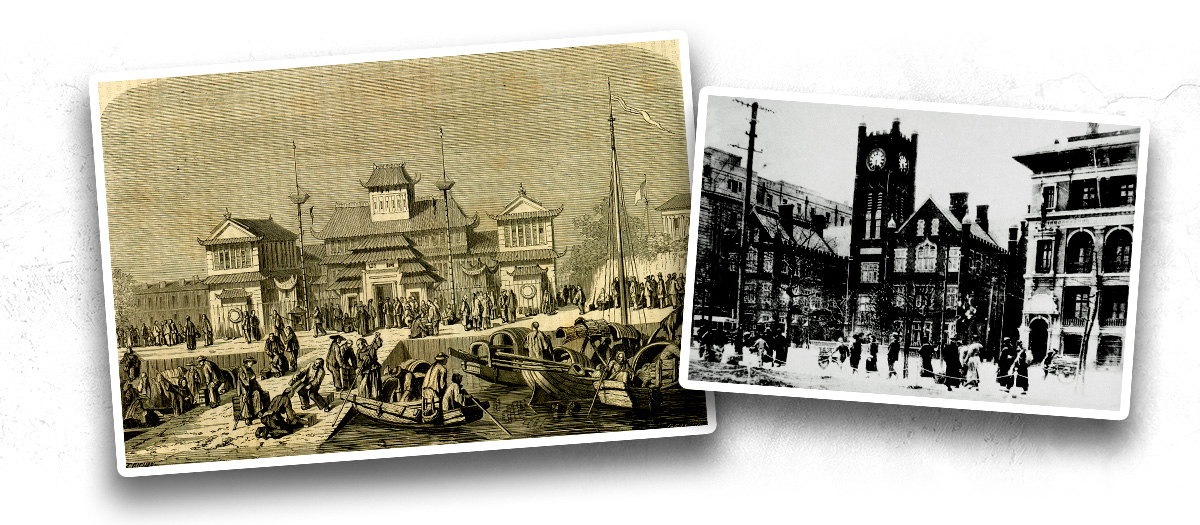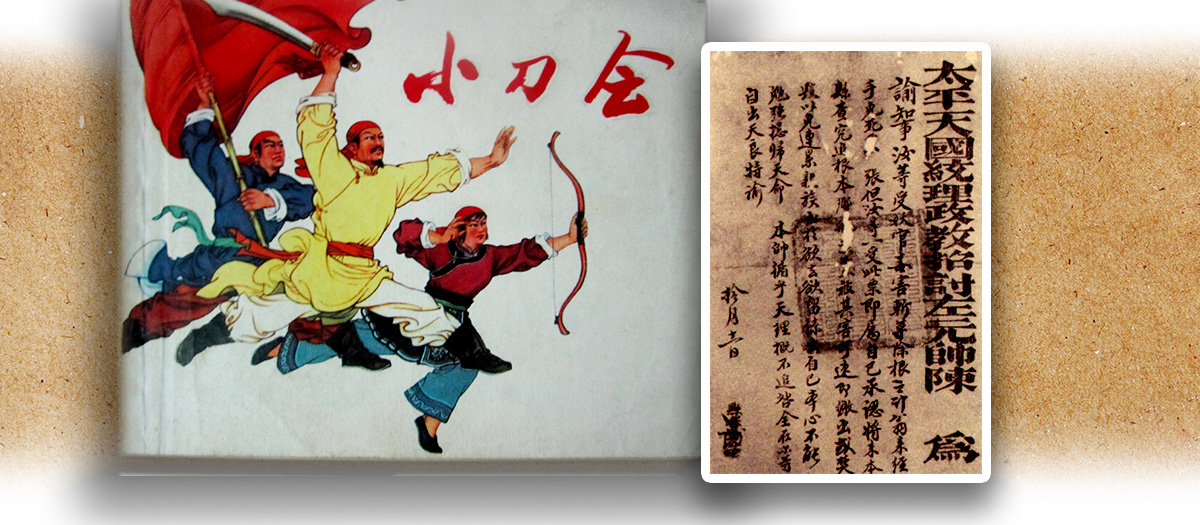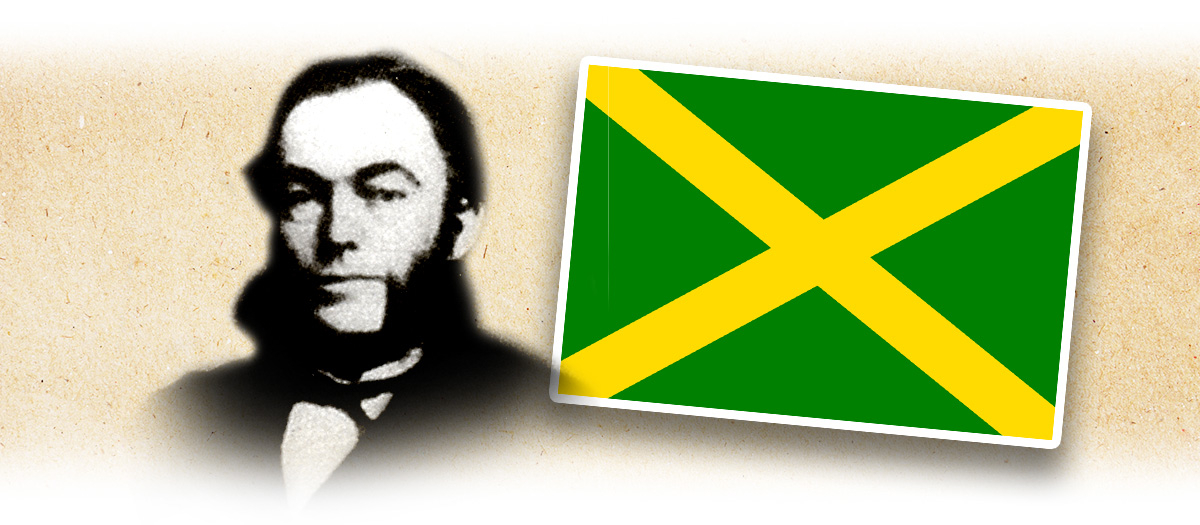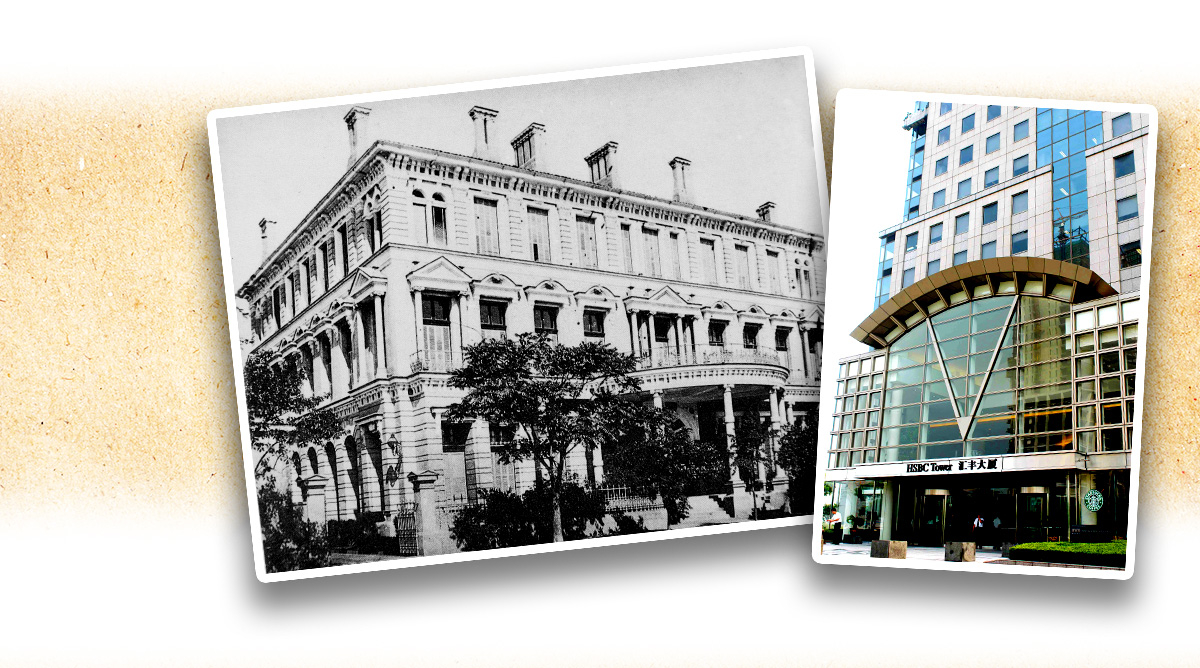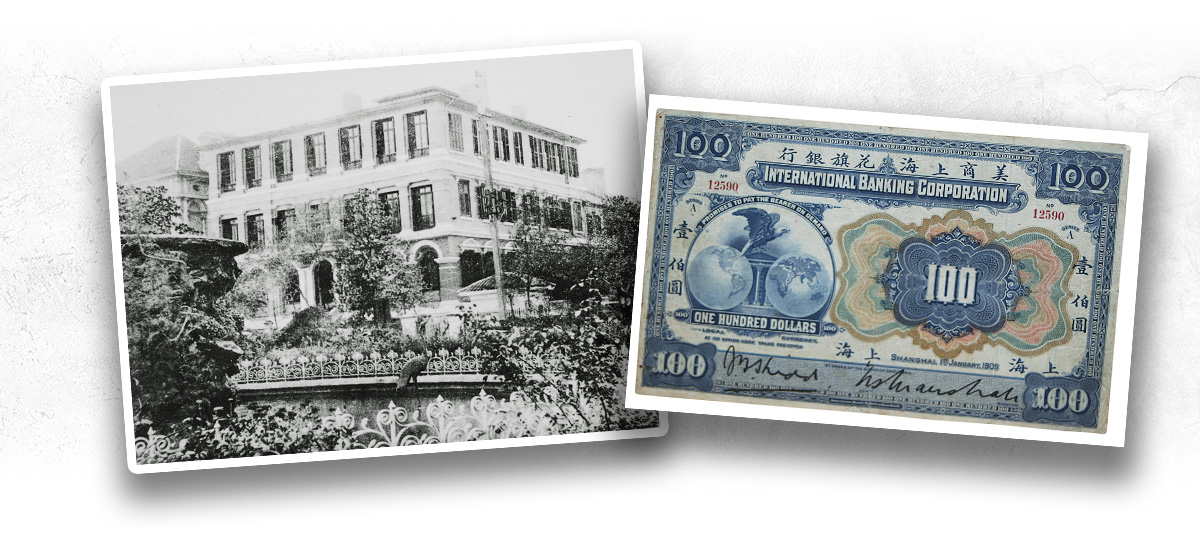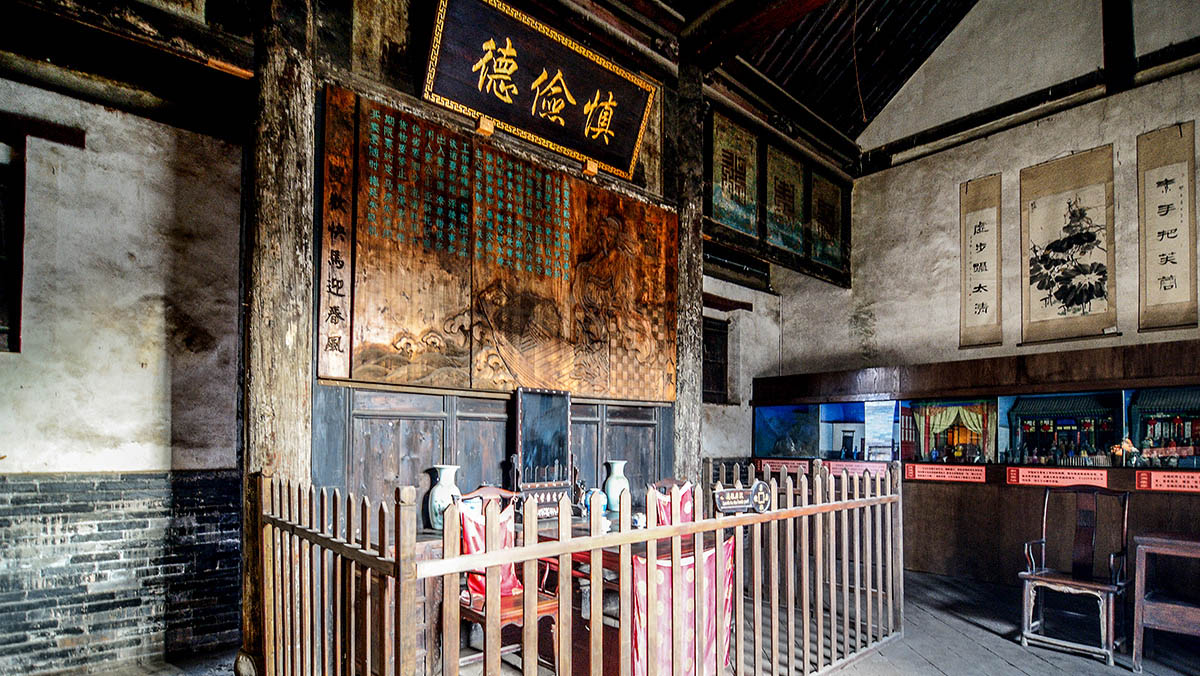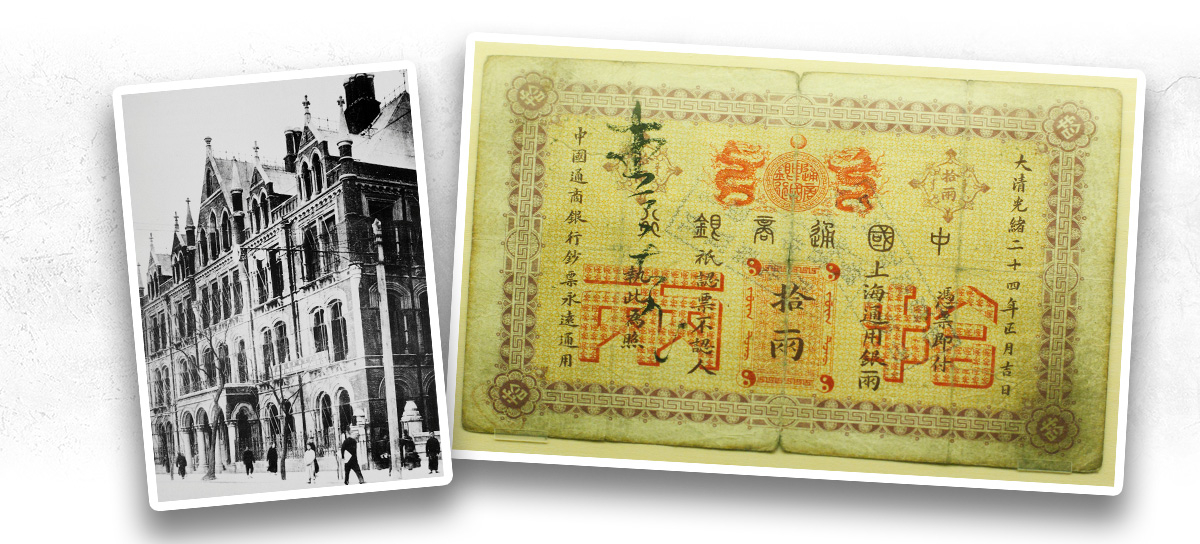Dominated by the imperialist powers, China was stripped of its tariff autonomy and customs service management for a long time. When the Qing government was preoccupied with the rebellious Taiping Army (太平軍) and the Small Swords Society (小刀會), the powers seized the opportunity to take over the administrative control of the Shanghai (上海) customs service in 1854. Britain, France, and the United States each nominated one person to form a new agency called the Foreigners Tax Committee.
In 1859, Horatio Nelson Lay, a British, was appointed as the Inspector-General of the Imperial Maritime Customs Service (IMCS). Based on the Shanghai model, he expanded its operations by establishing customs houses in Guangzhou (廣州), Chaozhou (潮州), Ningbo (寧波), Fuzhou (福州), Tianjin (天津), Jiujiang (九江), Hankou (漢口), Yantai (煙台), and other ports. In 1863, Sir Robert Hart, a British, succeeded Lay and added some 30 more subsidiary stations to the IMCS until the early 20th century. It thus cemented the foreign control over the customs service in China.
At the same time, China was subjected to ever more intense financial aggression as foreign banks converged in China to control its financial sector. They included three British banks: the Oriental Bank, the Chartered Bank of India, Australia and China, and the Hongkong and Shanghai Banking Corporation Limited (HSBC); the German Deutsch Asiatische Bank; the Japanese Yokohama Specie Bank; the French Banque de l'Indochine; the Russian Sino-Russian Righteousness Victory Bank, the American International Banking Corporation and other banks founded in the Netherlands and Belgium. In comparison with its rivals, China’s homegrown banks were far smaller and weaker. China’s first modern financial institution, the Imperial Bank of China (中國通商銀行) was not founded until 1897 and could hardly compete with its foreign counterparts.
|
|
When did the first modern banks appear in China? What were some of the notable ones by the end of the Qing dynasty? |
|
|
See answer below. |
The old and new Shanghai Customs House. As early as 1843, Shanghai established its modern customs service. In 1846, a traditional Chinese style customs house was built and was later rebuilt into a Western style building in 1893. Expanding trade was the initial motive for the Western powers’ dealings with China, and thus the Chinese customs service, in particular its Shanghai branch, mattered much to them.
The cover of a lianhuanhua (serial picture story) titled The Small Swords Society and a public notice issued on behalf of the Heavenly Kingdom of Great Peace (太平天國) by Chen Alin (陳阿林), the leader of the Shanghai branch of the Small Swords Society. When the Society occupied Shanghai in 1853, the imperialist powers allied with the Qing government to suppress the rebellion in order to safeguard their own interests. Amidst the turmoil, they also seized the opportunity to take charge of the customs service in Shanghai.
Horatio Nelson Lay, the British appointed to be the first Inspector-General of the Imperial Maritime Customs Service (IMCS) (left), and the first ensign of Chinese customs service he designed (right).
In 1854, Britain, France, and the United States each nominated one person to form the Foreigners Tax Committee, an agency managing the Shanghai customs service. The foreign domination of China’s customs service thus commenced. In 1859, Lay became the first Inspector-General of the IMCS. Based on the Shanghai model, he expanded its operations to various treaty ports and established custom houses there.
On the left: Robert Hart, the British Inspector-General of the IMCS between 1863 and 1908; on the right: Hart and his Chinese assistant at work in their office in Beijing (北京). China’s customs service was run by foreigners (Lay and Hart) for decades during the late Qing period, which was an unusual practice in history.
As a foreigner, Robert Hart greatly improved the IMCS’s management and endeavoured to maintain friendly Sino-foreign relations. His work also contributed to the Self-strengthening Movement (洋務運動) and helped promote the development of cultural education in China. As a result, he was showered with honours from China, Britain, and other countries. Hart Avenue, a street in Tsim Sha Tsui, Hong Kong, was his namesake. China allowed a foreigner to manage its customs service for years because no one else in the country appeared equal to the task. It highlighted the Qing government’s inability and the extent of its loss of sovereignty.
The Shanghai branch of the British Oriental Bank. The bank opened its first branch in China in 1845 and was China’s first bank in the early modern age. A growing number of banks from various countries including France, Germany, Japan, Russia, and the United States followed its footsteps to develop their business in China.
On the left: the original Hongkong and Shanghai Banking Corporation Limited (HSBC) building in Shanghai in the 19th century; on the right: a modern-day photo of HSBC Tower in the Pudong (浦東) financial district, Shanghai. The British HSBC opened its door in Hong Kong in March 1865. In April and June of the same year, two other branches were established in Shanghai and London respectively. To this day, the bank still wields great influence, particularly in Hong Kong.
On the left: a modern-day photo of the Banque de l'Indochine building in Guangzhou; on the right: a 20-tael banknote issued by the Deutsch-Asiatische Bank during the late Qing dynasty. In 1889, the French Banque de l'Indochine and the German Deutsch-Asiatische Bank commenced business in Guangzhou and Shanghai respectively.
Japan and the United States also set up their own banks in China. On the left: a photo of the Japanese Yokohama Specie Bank building taken in Shanghai during the late Qing dynasty; on the right: a 100-dollar banknote issued by the American International Banking Corporation during the late Qing dynasty.
The site of the former Rishengchang piaohao (Rishengchang Draft Bank, 日昇昌票號) in Pingyao (平遙), Shanxi Province (山西). Prior to the Opium War, draft banks, whose core business was the remittance of silver, formed the backbone of China’s financial sector. There was a time when the national finance was dominated by Shanxi draft banks. During the Qing dynasty, Rishengchang Draft Bank was the biggest of its kind. After the Opium War, however, traditional draft banks gradually declined as they were out-performed by the more advanced foreign banks.
It was not until 1897 that the Imperial Bank of China, the first Chinese modern financial institution, emerged. Pictured is the Imperial Bank of China building in Shanghai during the late Qing dynasty and a 10-tael banknote issued in the 24th year of Emperor Guangxu’s (光緒) reign (1898). Chinese banks could hardly compete with the more advanced and deep-pocketed foreign banks. The national financial sector thus came under foreign dominance.
|
|
When did the first modern Chinese banks appear? What were some of the notable ones by the end of the Qing dynasty? |
|
|
The first foreign bank appeared in China as early as in 1845. China’s first homegrown modern banks did not emerge until more than half a century later, when Sheng Xuanhuai (盛宣懷) founded the Imperial Bank of China in May 1897. By the end of the Qing dynasty, China ran around a dozen local banks. Most were government-run or government-business joint ventures. Compared with their foreign counterparts, local banks were less well endowed with capital and developed more slowly. Besides the more well-known Imperial Bank of China, other notable banks included the Ta-Ching Bank of the Ministry of Revenue (大清戶部銀行, established in 1905 and restructured to form the Bank of China in 1911); Sin Chun Bank of China (信成商業儲蓄銀行, est. 1906); Xinyi Bank (信義銀行, est. 1907); Hsing Yeh Bank of Che Kiang (浙江興業銀行, est. 1907); Ningpo Commercial Bank (四明商業儲蓄銀行, est. 1908); Bank of Communications (交通銀行, est. 1908); Kwangsi Bank (廣西銀行, est. 1909), and Ssuch’uan Bank (四川銀行, est. 1911). |
Sources of most photos used in this feature piece: Visual China Group (pictures 1, 3, 4, 6-10), Fotoe (pictures 2, 4, 5, 6, 7, 8 and 10), misc. photo sources.





